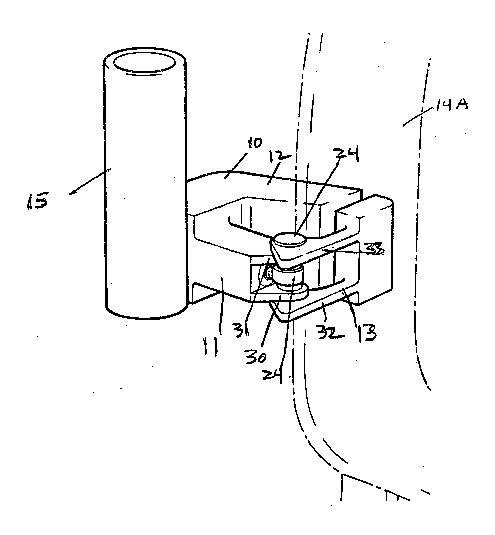Some of the information on this Web page has been provided by external sources. The Government of Canada is not responsible for the accuracy, reliability or currency of the information supplied by external sources. Users wishing to rely upon this information should consult directly with the source of the information. Content provided by external sources is not subject to official languages, privacy and accessibility requirements.
Any discrepancies in the text and image of the Claims and Abstract are due to differing posting times. Text of the Claims and Abstract are posted:
| (12) Patent Application: | (11) CA 2076202 |
|---|---|
| (54) English Title: | BRACKET |
| (54) French Title: | PINCE DE SERRAGE |
| Status: | Deemed Abandoned and Beyond the Period of Reinstatement - Pending Response to Notice of Disregarded Communication |
| (51) International Patent Classification (IPC): |
|
|---|---|
| (72) Inventors : |
|
| (73) Owners : |
|
| (71) Applicants : | |
| (74) Agent: | GOWLING WLG (CANADA) LLP |
| (74) Associate agent: | |
| (45) Issued: | |
| (22) Filed Date: | 1992-08-14 |
| (41) Open to Public Inspection: | 1993-02-04 |
| Availability of licence: | N/A |
| Dedicated to the Public: | N/A |
| (25) Language of filing: | English |
| Patent Cooperation Treaty (PCT): | No |
|---|
| (30) Application Priority Data: | None |
|---|
ABSTRACT
A clamping device is provided to be secured to articles such
as patio furniture to mount an umbrella or the like. Clamping
jaws engage the article of furniture and there is a holder for
mounting the umbrella to provide a first position permitting
pivotal movement of the holder and a second position in which
locking teeth inter-engage to prevent pivotal movement. There
are means for normally securing the first section to the second
section in a position where pivotal movement is prevented.
Note: Claims are shown in the official language in which they were submitted.
Note: Descriptions are shown in the official language in which they were submitted.

2024-08-01:As part of the Next Generation Patents (NGP) transition, the Canadian Patents Database (CPD) now contains a more detailed Event History, which replicates the Event Log of our new back-office solution.
Please note that "Inactive:" events refers to events no longer in use in our new back-office solution.
For a clearer understanding of the status of the application/patent presented on this page, the site Disclaimer , as well as the definitions for Patent , Event History , Maintenance Fee and Payment History should be consulted.
| Description | Date |
|---|---|
| Inactive: IPC from MCD | 2006-03-11 |
| Inactive: IPC from MCD | 2006-03-11 |
| Inactive: IPC from MCD | 2006-03-11 |
| Inactive: IPC from MCD | 2006-03-11 |
| Inactive: IPC from MCD | 2006-03-11 |
| Time Limit for Reversal Expired | 1997-08-14 |
| Application Not Reinstated by Deadline | 1997-08-14 |
| Deemed Abandoned - Failure to Respond to Maintenance Fee Notice | 1996-08-14 |
| Application Published (Open to Public Inspection) | 1993-02-04 |
| Abandonment Date | Reason | Reinstatement Date |
|---|---|---|
| 1996-08-14 |
Note: Records showing the ownership history in alphabetical order.
| Current Owners on Record |
|---|
| RICHARD CHARLES MAYNE |
| LAURENCE GRAY |
| RICHARD WHYTE |
| Past Owners on Record |
|---|
| None |